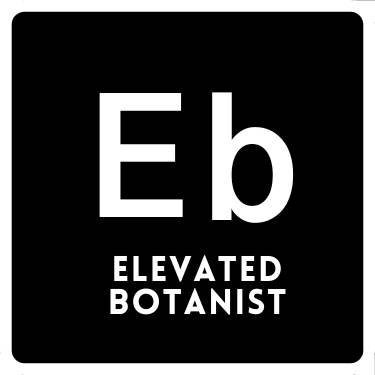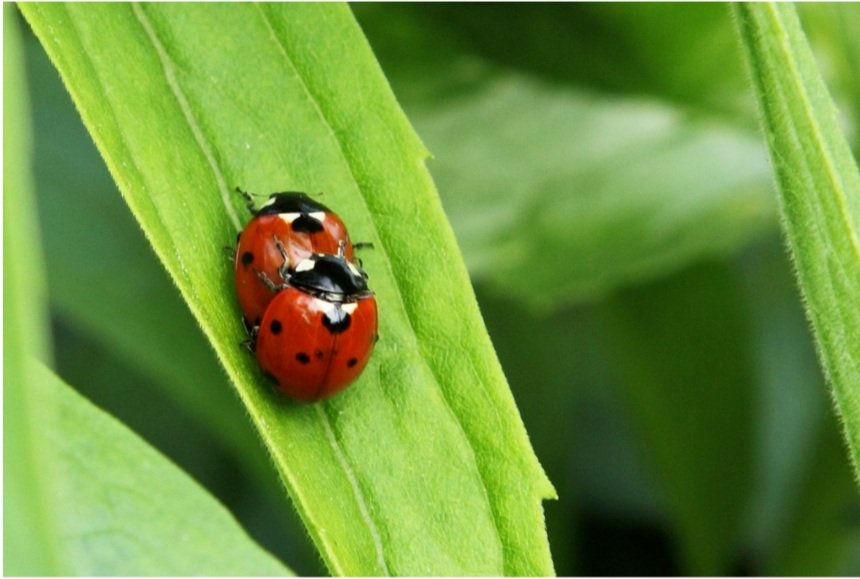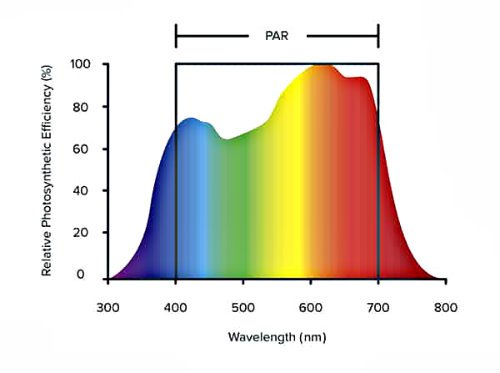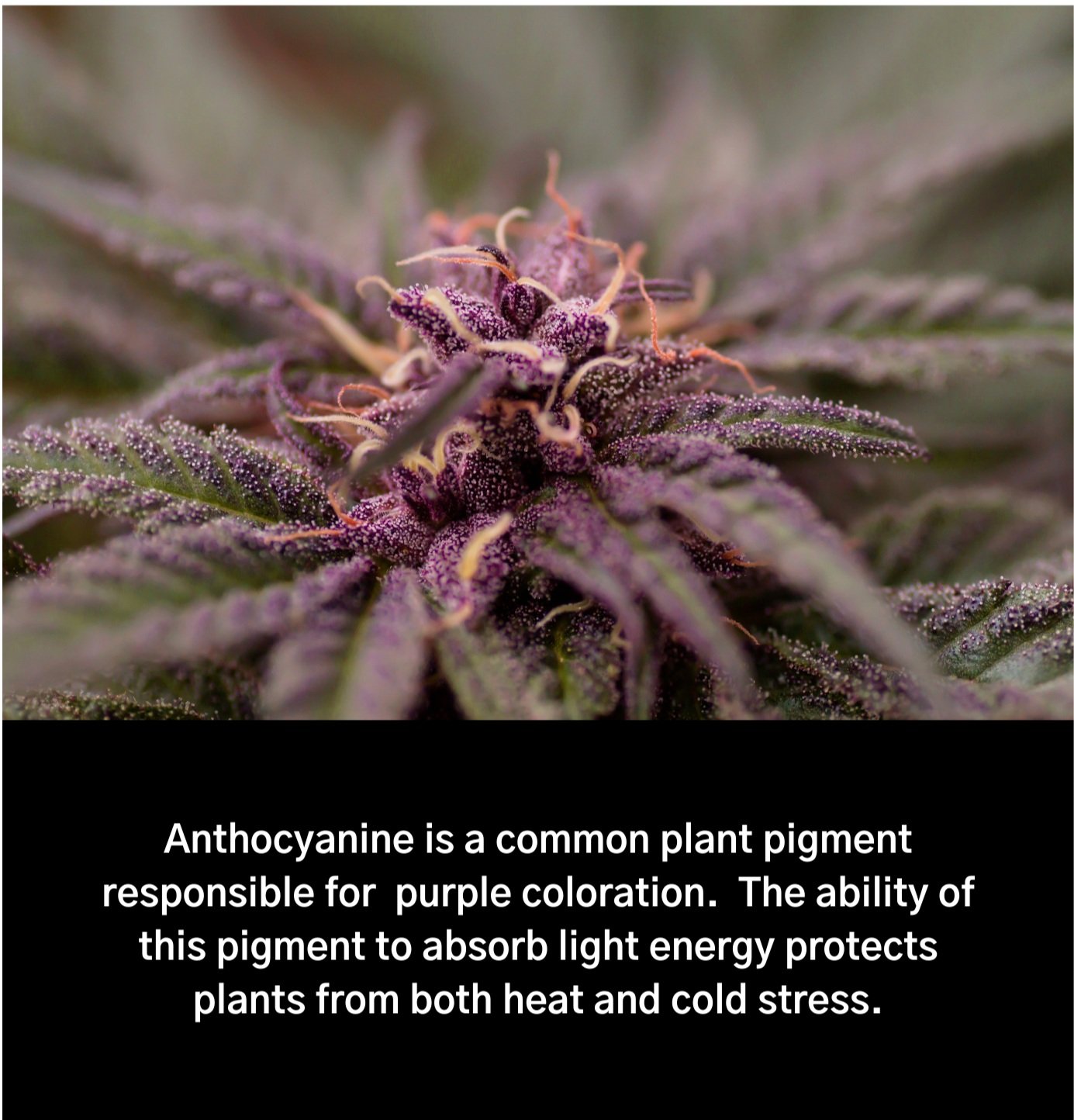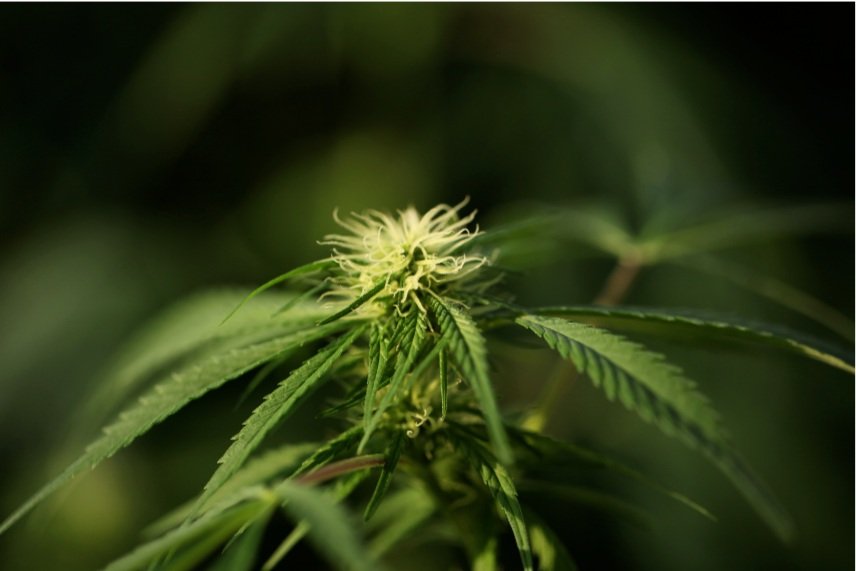How Cannabis Plants are Shaped by Light Information:
The biochemistry of photoperception
Plant interactions with their light environment are complex and have evolved over hundreds of millions of years. Our time together is shorter than that, so I hope you will forgive me if I simplify a bit.
The starting point to understand plant responses, is to think like a plant. Plants have two essential prerogatives. To photosynthesize and to reproduce.
Photosynthesis is the conversion of light energy into chemical energy, which fuels all plant development.
Reproduction is a motivation that most of us can relate to.
The incredible variability we see in the plant kingdom are the result of evolution in service to these two basic requirements.
Plasticity Matters
Plants are sessile organisms. They are rooted in place, and don’t have the ability to change their environment, or to take a vacation if they don’t like the weather. For this reason, plants have evolved the ability to radically change their physical form to adapt to their ecological niche. This ability is known as plasticity.
Photoreceptors
Information about the light environment is perceived by plant photoreceptors.
These photoreceptors are pigments, or biochemicals which change state when exposed to specific wavelengths and intensities of light.
Photoreceptors collect information about light quality, quantity, duration, and direction. This information is distributed within the plant through hormones, and other signaling chemicals.
This information enables plants to direct growth to optimize light capture, and ensures that reproductive developments like flowering occur during a specific time of year.
This ability to change form, or morphology, based on light information is known as photomorphogenesis.
Light Quality
When we talk about light quality, we are referring to the spectral composition of the light environment. We perceive this spectral composition as color. Plants perceive light quality as different wavelengths of light energy.
Not all light spectra are valuable for photosynthesis. The portion of the light spectrum that has direct photosynthetic value is known as Photosynthetically Active Radiation, or PAR.
PAR is defined as the portion of the electromagnetic spectrum between 400 and 700 nanometers in length. We perceive PAR as white light. Light spectra that fall outside of PAR can also have effects on plant health, and morphology.
Light wavelengths of 280-400 nanometers in length are known as ultraviolet, or UV wavelengths. Although these light qualities have limited photosynthetic potential, they have important effects on plants, most of which are detrimental.
Photoprotection
UV light can damage cells, and plants have evolved systems to limit, or repair cell damage caused by UV radiation. These systems are referred to as being photoprotective.
UVR8 is the primary photoreceptor responsible for UV photoprotection. This photoreceptor can enable synthesis of photoprotective pigments like anthocyanine, the pigment which gives plants their purple coloration.
Far-Red Light
At the other end of PAR, we have far-red light. Far-red light is classified as light spectra between 700 and 780 nanometers in length.
Far-red light has limited photosynthetic potential but has potent effects on plant morphology. In far-red enriched environments, which occur within dense canopies, plants will often exhibit Shade Avoidance Response. This response involves rapid shoot elongation to outgrow the surrounding canopy. This response is not based on light intensity, but on light quality, specifically the ratio of red to far-red light.
Phytochromes
Phytochromes are the class of photoreceptors that absorb light energy primarily in the red to far-red portion of the light spectrum, with some absorption in the blue spectrum, particularly at high light intensities.
Phytochromes exist in two interconvertible states depending on the quality of light they absorb. Phytochrome red is the red-light absorbing state. When this pigment is saturated, it converts to phytochrome far-red. These states of phytochrome are constantly interconverting to mirror the light environment. This process is known as photo equilibrium.
During the photoperiod, there is typically far more red than far-red light and phytochrome far-red is the dominant state.
During the dark period, or skotoperiod, the phytochrome far-red slowly converts back to phytochrome red.
This daily pattern of the interconversion of phytochrome red and phytochrome far-red creates a rhythm which enables photoperiod perception. This rhythm is known as the circadian clock and informs many biological processes.
The Circadian Clock
Light duration, or photoperiod is the most reliable indicator of seasonal changes in the environment.
Through photoperiod perception, plants can determine not only the current climate conditions, but also anticipate future seasonal conditions and formulate an appropriate reproductive response.
Cryptochromes
Another important class of photoreceptors are the Cryptochromes. Cryptochromes are primarily UV, blue, and green light receptors. They are called cryptochromes due to their cryptic nature. Multiple photoreceptors absorb light within overlapping spectra, making it very difficult for early researchers to determine which photoreceptors are responsible for various plant responses.
Cryptochromes have a role in many aspects of plant development. In general, they oppose stem elongation, and favour leaf expansion. In many plants, cryptochromes also have a role in photoperiod perception, and entraining the circadian clock. Many plant responses that are triggered by blue light can be opposed by green light. This is similar to the red to far-red toggle effect of phytochrome response.
Phototropins
Another class of photoreceptors that guide plant development are the Phototropin receptors.
Phototropins percieve light in the blue and UV spectra, and enable plants to determine light direction, and to grow toward the light. This phenomenon is known as Phototropism.
We have now examined Phytochromes, Cryptochromes, Phototropins, and UVR8. These are the main signaling systems that plants use to determine light quality, quantity, duration, and direction.
Plants continuously measure the light environment through cross-talk between these various signaling systems. This information directs plant shape through hormone regulation and genetic expression, to enable the plant to optimize its form for Photosynthesis, and Reproduction.
Photosynthesis
Now that we have considered how plants perceive light and how they change form based on the information provided by photo receptors, let’s turn to the main course, which is of course photosynthesis.
Photosynthesis is the ability of plants to convert light energy into chemical energy in the form of simple carbohydrates.
Light exposure drives plant uptake of water and nutrients. Plants exchange water vapor and oxygen for carbon dioxide through stomata or pores on the undersides of their leaves.
This gas exchange component of photosynthesis is responsible for creating the habitable aptmosphere we enjoy here on earth.
No big deal.
Chlorophylls
Chlorophylls primarily absorb light energy in the blue and red portions of the light spectrum and synthesize carbohydrates through a multi step process.
This process takes place within the chloroplast; an organelle present in high numbers in leaf cells.
Carotenoids
Carotenoids are a class of photoreceptors comprised of many types of pigments, including Carotenes, Lycopenes, and Xanthophylls.
These pigments serve both photoprotective, and photosynthetic roles within the chloroplast.
Carotenoids absorb light in wavelengths that are not as efficiently absorbed by chlorophylls, primarily in the blue to green portion of the light spectrum, and reflect the longer red, yellow, and orange wavelengths.
Carotenoids transfer the energy that is harvested to the chlorophylls for further synthesis. When chlorophylls are over saturated with light, carotenoids can dissipate the excess light energy as heat.
Chlorophylls and carotenoids will organize their locations within the chloroplast to optimize light capture. Under high intensity light, carotenoids primarily serve as photoprotective and photosynthetic support systems. Under lower light conditions within the canopy, carotenoids perform a primary role in photosynthesis.
Photosynthetic Photon Flux Density (PPFD)
Light intensity is also an important metric which determines plant response. We measure light intensity by calculating the total number of photons within the range of PAR that a plant receives per square meter per second. This measure is referred to as Photosynthetic Photon Flux Density.
Daily Light Integral
A plants photosynthetic potential is determined by the light intensity, or PPFD multiplied by the photoperiod duration. This calculation gives us the Daily Light Integral, or DLI which represents the total amount of light the plant receives during the photoperiod. The DLI is measured in mol, with 1 mol equaling some ridiculous number of photons.
Light amount alone does not determine photosynthesis. Other factors including water uptake and climate conditions will impact a plants ability to photosynthesize. Plants can only perform to their extent of their most limiting factor.
So…. What does this tell us about Horticulture Lights for Cannabis Growing?
An understanding of how plants interact with sunlight gives us important insights in creating an ideal spectrum for horticultural lights. Historic LED manufacturers have focused on providing red and blue light only, as these represent the peak absorption spectra of chlorophyll. This can result in plants inability to optimize their morphology for photosynthetic efficiency, as the light information they require is not available in the environment.
Provision of light in narrow bandwidth red and blue spectra can also lead to photobleaching under very high light intensities, as the supporting, and photoprotective roles of carotenoids are diminished by the limited spectra available.
Plants can adapt and perform under many different light conditions. When we seek to optimize an artificial light environment for plant performance, we are learning that broad spectrum, high fluence lighting technologies provide the most complete plant response.
